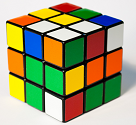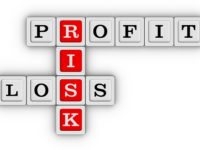Many have tried to find a proper definition for the simple word innovation. One university in fact has a definition that runs to two full sentences, believe it or not, but let’s leave that to the academics.
The secret to business is to keep things simple, complexity only serves to confuse.
If we look at the single biggest risk in business, which was discussed in a previous article, the answer is clearly market risk. Technologists and engineers will almost always deliver the solution you want, the difficult question is whether or not the market will want it? Unfortunately, as many in business will know, this is by far the most difficult question.
Innovation is about improvement, in fact this is a classic synonym for innovation. Further, if we take it that people will only buy things because in their eyes they see value for money, the “value proposition” (also previously discussed) then perhaps a good definition for innovation can be derived from this.
Innovation is best defined as “Change that Adds Value”. A definition that I first coined some twenty years ago and in my book, Think New. A definition that many organisations and innovation practitioners worldwide have now adopted.
Why so simple?
If we take it that indeed market risk is the single biggest business risk then working from the above definition leads to the simple key to success.
The answer – you don’t have to be first with the next big thing indeed most firsts fail. The secret is to find something that everybody is buying and simply change it in some way to add value. In doing so you dramatically reduce market risk.
A simple example
The most obvious and simple example can be seen with a Rubik’s Cube. Nobody in the right mind would have been a founding investor in the Rubik’s Cube because it’s impossible to see the value it offers and moreover, nobody really knew what it was or why you would want one.
However, given the amazing success of the Rubik’s Cube, let us now innovate it to find new value and markets. The pictures below tell the story.
 ⇒
⇒ 
But it gets even better than that, given that we can modify it for unsighted people, the Braille Rubik’s Cube, to find a completely new untouched market, what about now the colour blind. It is said that some 10 per cent of the male population is colour blind, so the perfect innovation for a Rubik’s Cube is one with patterns, not colours, and Braille instead of plane flat surfaces. Clearly a new product with virtually no market risk.
Where to from here?
If you chose to adopt the definition of innovation as “Change that Adds Value” it can readily be seen that using innovation to create new products clearly reduces market risk.
It’s as simple as finding a product or service that everybody is using and innovate it in some way. By doing so you mitigate the risk of newness and at the same time have a value added product that everybody understands.
Roger La Salle, www.innovationtraining.com.au
















